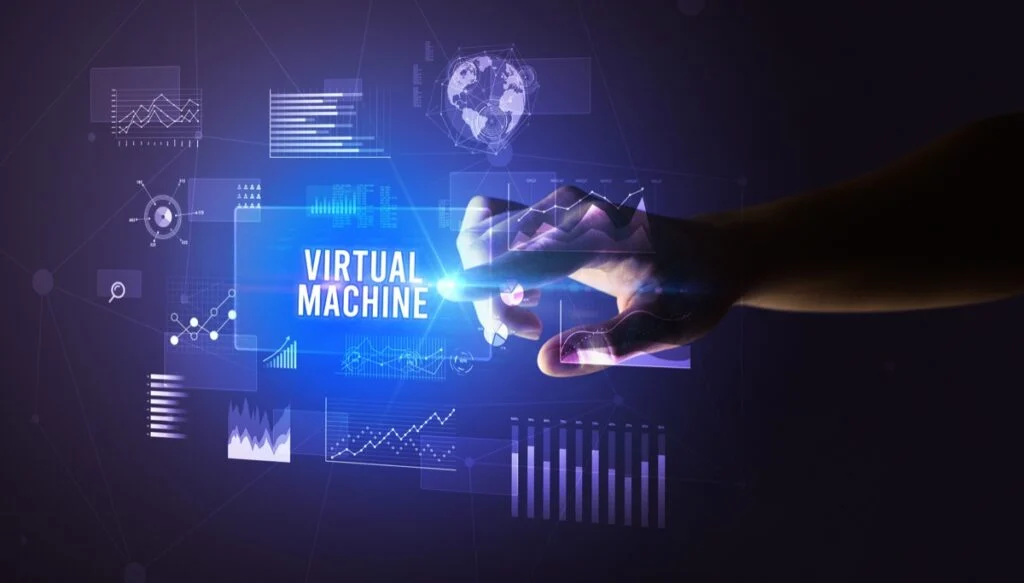Understanding what is virtual machine is becoming increasingly important in today’s digital world. As technology evolves, businesses, developers, and everyday users are relying more on virtual environments. A virtual machine (VM) allows a computer to run multiple operating systems on a single physical device. This makes computing more efficient, flexible, and secure. In this article, we will explore what is virtual machine, how it works, what it is used for, and why it has become a major part of modern IT.
What Is Virtual Machine?
To understand what is virtual machine, imagine creating a completely separate computer inside your actual computer. A virtual machine is a software-based environment that acts like a real computer system. It has its own CPU, memory, storage, and operating system — all created virtually. This means one physical device can run multiple operating systems, such as Windows, Linux, or macOS, at the same time.
A virtual machine operates using a special software called a hypervisor. This hypervisor manages all system resources and divides them between different virtual machines. When people ask what is virtual machine, the simplest answer is: it is a computer created through software rather than hardware.
How Does a Virtual Machine Work?
To fully understand what is virtual machine, it is helpful to learn how it functions. A virtual machine uses the resources of the host computer — such as RAM, storage, and processing power — to create an independent environment. The hypervisor creates a barrier between the physical device and the virtual machine, ensuring each VM runs separately without interfering with the host system.
There are two main types of hypervisors used when explaining what is virtual machine. Type 1 hypervisors run directly on the hardware, making them faster and more secure. Type 2 hypervisors run on top of a traditional operating system and are usually used for personal or small-scale use. Both types allow users to create, manage, and operate virtual machines easily.
Types of Virtual Machines
When learning what is virtual machine, it’s important to know the different types available. There are two main categories of virtual machines: system virtual machines and process virtual machines. System virtual machines act as complete computer systems, allowing users to install different operating systems. Process virtual machines run a single program or application inside a controlled environment.
System virtual machines are the most commonly used. They help people test software, run multiple OS environments, protect data, and experiment without damaging the main system. Understanding these types will give you a clearer idea of what is virtual machine and how it fits into modern computing.
Uses of Virtual Machines
A major part of understanding what is virtual machine involves exploring where and how virtual machines are used. Businesses and developers often use VMs to test software in different environments. This helps them avoid buying multiple physical devices. Virtual machines are also used in cloud computing, where many servers run virtual environments to store data and host applications.
Individuals use virtual machines to run apps that may not work on their main operating system. For example, someone using a Mac can create a Windows VM to run Windows-only applications. Virtual machines are also popular for cybersecurity training since they allow users to experiment with threats without harming the main system.
Benefits of Virtual Machines
When we study what is virtual machine, we also discover the numerous benefits. One of the biggest advantages is flexibility. With a VM, users can switch between different operating systems easily. Another benefit is cost savings — companies no longer need multiple computers to test software or run different applications.
Security is another major advantage. Since the virtual machine works as a separate environment, viruses or malware cannot damage the host system. This makes virtual machines ideal for risky tasks like downloading unknown files or visiting suspicious websites. Understanding these benefits is a key part of learning what is this and why it’s so widely used.
Virtual Machines in Cloud Computing
To understand what is this in modern IT, you must explore its connection to cloud computing. Virtual machines are the building blocks of cloud platforms. Companies like Amazon, Google, and Microsoft use VMs to offer cloud services such as storage, hosting, and computing power.
Cloud providers run thousands of virtual machines on a small number of physical servers. This makes cloud computing affordable, scalable, and reliable. When someone asks what is this, the cloud industry is one of the best examples of its importance.
Virtual Machine vs Physical Machine
A common question that arises when learning this is the difference between a VM and a physical computer. A physical machine uses actual hardware, while a virtual machine uses software to imitate hardware. A virtual machine depends on the host device for resources, but it behaves just like a real computer.
Physical machines are often faster because they have direct access to hardware. Virtual machines, on the other hand, offer more flexibility and safety. Understanding these differences helps clarify and why both types are useful depending on the situation.
Limitations of Virtual Machines
Even while exploring what is this, it’s important to understand their limitations. Virtual machines may run slower compared to physical devices because they must share hardware resources. They also occupy storage space and require enough RAM to operate smoothly.
Another limitation is that running too many VMs on one computer can cause lag or performance issues. Despite these drawbacks, virtual machines remain extremely valuable due to their convenience and efficiency. Recognizing these limitations helps give a balanced understanding of this.
Why Learning What Is Virtual Machine Matters Today
Learning this is essential because virtualization has become a core part of computing technology. Businesses use VMs to manage servers, cut down costs, and increase security. Developers use them to test apps without needing multiple devices. Everyday users rely on them to run different operating systems effortlessly.
As the world continues moving toward cloud platforms and digital tools, virtual machines will play an even bigger role. This is why understanding this is helpful for students, professionals, and technology lovers.
Conclusion
After exploring all aspects of what is this, it becomes clear that are one of the most important innovations in modern computing. They offer flexibility, security, cost efficiency, and powerful testing environments. Whether for personal use or business applications, virtual machines allow users to create separate digital worlds inside a single device. Understanding what is this helps users take advantage of virtualization technology in smarter and more efficient ways.

